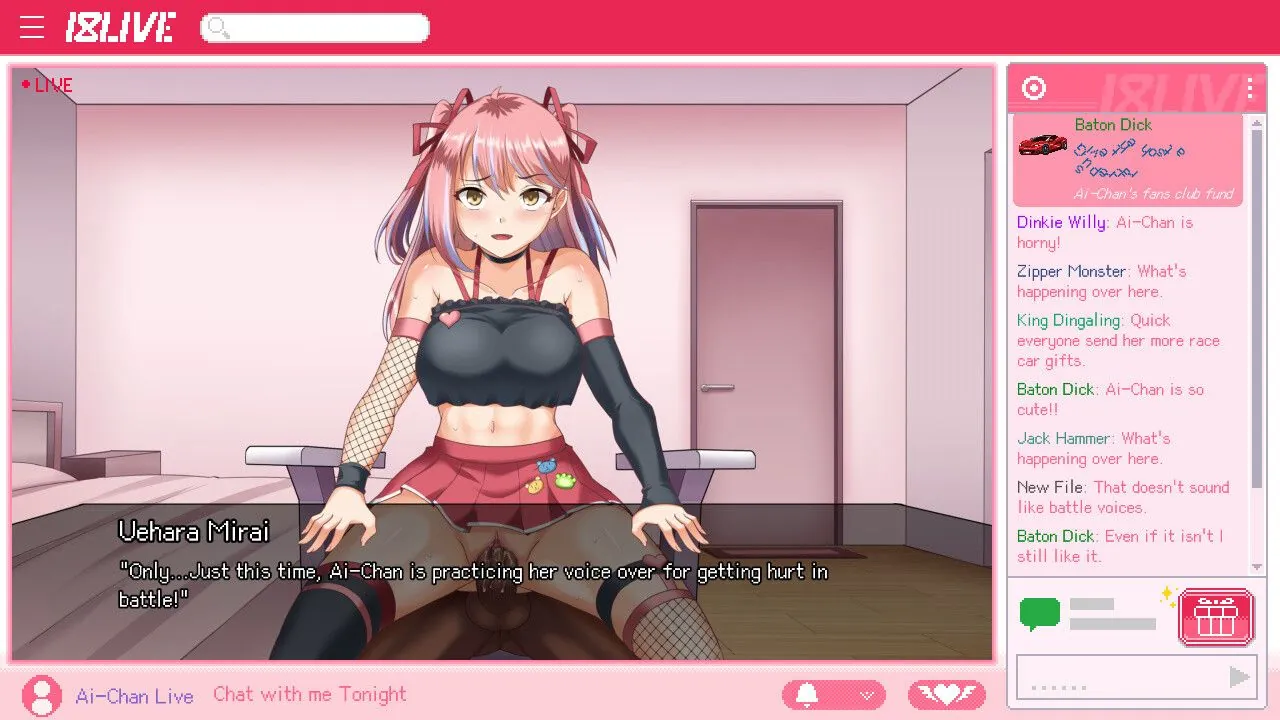
Strangers on Paper
Play Strangers on Paper
Strangers on Paper review
Explore the story, gameplay, and unique features of Strangers on Paper
Strangers on Paper is a captivating visual novel that blends mature storytelling with interactive gameplay, inviting players to explore complex relationships and personal growth. Centered around a writer battling creative block, the game unfolds in a bar setting where encounters with intriguing characters inspire new narratives. This article dives deep into the game’s unique features, narrative style, and player-driven choices that shape multiple endings, making it a standout title in its genre.
Understanding Strangers on Paper: Story and Gameplay
What is Strangers on Paper About? 🤔
Let me tell you about a game that completely redefined what I expect from interactive storytelling. I remember firing up Strangers on Paper after a long day, expecting a light narrative to unwind with. I was not prepared for the emotional journey I was about to embark on. At its heart, the Strangers on Paper story is a masterclass in mature, character-driven drama. You step into the worn-out shoes of Daniel, a writer grappling with a crippling creative block. Sound familiar? I think we’ve all faced our own versions of that wall.
In a desperate bid for inspiration, Daniel heads to a local bar, a classic move for a struggling artist. But this is where the genius of the Strangers on Paper story unfolds. The “strangers” he meets—primarily the sharp-witted Becca and the more reserved Amy—are not random encounters. They are intricately linked to a forgotten part of his own past. The game brilliantly plays with the idea that we are all connected in ways we can’t immediately see. This isn’t just about finding a story; it’s about Daniel piecing together the fragments of his own life, confronting memories and truths he’s long suppressed. The emotional weight of this discovery is palpable, making the Strangers on Paper story a deeply personal experience.
To help you get acquainted with the key players in this intricate drama, here’s a breakdown of the main Strangers on Paper characters and the roles they play:
| Character | Role in the Narrative | Primary Connection to Daniel |
|---|---|---|
| Daniel | The protagonist and a blocked writer seeking inspiration. | His own past and unresolved personal struggles. |
| Becca | A sharp, perceptive, and often challenging presence at the bar. | A direct link to a significant, forgotten period of Daniel’s youth. |
| Amy | A more reserved and emotionally complex individual. | Connected to the same past events as Becca, offering a different perspective. |
Gameplay Mechanics and Player Choices 🎮
If you’re new to visual novels, you might wonder about the Strangers on Paper gameplay. Is it just clicking through text? Far from it. The Strangers on Paper gameplay loop is deceptively simple but incredibly powerful. You’ll spend your time reading dialogue and narrative descriptions, but the magic lies in the visual novel choices you are forced to make. These aren’t just “Good Guy/Bad Guy” options; they are nuanced, often difficult decisions that feel real.
The core of the experience is built on a dialogue tree system. When Daniel speaks, you typically have two or three responses to choose from. These can range from what topic to discuss, to the specific emotional tone Daniel uses—be it empathetic, defensive, curious, or confrontational. This system is the engine of the game’s renowned interactive storytelling. Every choice subtly shifts your relationships with Becca and Amy.
Pro Tip: There are no “right” answers, only authentic ones. I learned this the hard way when my attempt to be overly charming with Becca completely backfired, shutting down a conversation path I didn’t even know existed!
Let me give you a concrete example of how a single decision can ripple through the narrative.
Example: The Jukebox Moment
Early on, Becca might challenge Daniel about his taste in music at the bar’s jukebox.
* Choice A: Defend your nostalgic choice passionately. (“This song is a classic!”)
* Choice B: Dismiss it self-consciously. (“Yeah, it’s probably lame.”)
* Choice C: Turn the question back on her. (“What would you play?”)
Choosing A might unlock a deeper conversation about shared memories, strengthening your bond with Becca but potentially making Amy feel like an outsider. Choice B could paint Daniel as insecure, altering how both characters perceive his confidence. Choice C, which I opted for on my second playthrough, opened up a completely new avenue about Becca’s own past that I had missed entirely. This is the brilliance of the visual novel choices here; they don’t just change a “friendship points” counter, they actively reshape the narrative landscape and the information you receive. This mechanic is what makes the multiple endings visual novel aspect so compelling and rewarding.
Narrative Style and Emotional Themes 💔
The narrative style of Strangers on Paper is what elevates it from a great game to an unforgettable piece of art. It’s delivered in an episodic format, which, in my opinion, is a stroke of genius. Instead of consuming the story in one sitting, you process it in chapters, much like a prestige TV series. This pacing allows the weight of your decisions to sink in. I found myself thinking about the characters and my choices for days between episodes, which massively deepened my emotional investment.
The game fearlessly explores heavy emotional themes in games, treating them with a rawness and respect that is rarely seen. We’re not just talking about simple sadness or joy. Strangers on Paper delves into:
* The profound loneliness that can exist even when you’re surrounded by people.
* The struggle with addiction, not just to substances, but to past glories and self-destructive patterns.
* The messy, complicated process of confronting grief and regret.
These emotional themes in games are not used as cheap plot devices; they are woven into the very fabric of the Strangers on Paper characters. Becca’s sharp wit is a shield, Amy’s reserve is a fortress, and Daniel’s writer’s block is a symptom of a deeper emotional paralysis. Seeing these layers peel back through your visual novel choices is a profoundly human experience.
This commitment to character depth is the driving force behind the game’s multiple endings visual novel structure. Your ending isn’t determined by one big choice at the finale, but by the cumulative effect of dozens of small, authentic interactions throughout the game. Will Daniel find a way to reconcile with his past? Will he mend broken bonds, or will some bridges remain burned forever? The power is genuinely in your hands, making the Strangers on Paper story your own unique, personal tale of connection and redemption. It’s a powerful reminder of the potential of interactive storytelling to make us feel, reflect, and, ultimately, understand a little more about the human condition.
Strangers on Paper offers a rich, emotionally charged experience that combines thoughtful storytelling with meaningful player decisions. Its unique setting and well-developed characters create a memorable journey for anyone interested in narrative-driven games. Whether you’re drawn to its mature themes or the depth of its interactive elements, this visual novel promises a compelling exploration of human connection. Dive into the game to discover how your choices shape the story and unlock its multiple endings.













